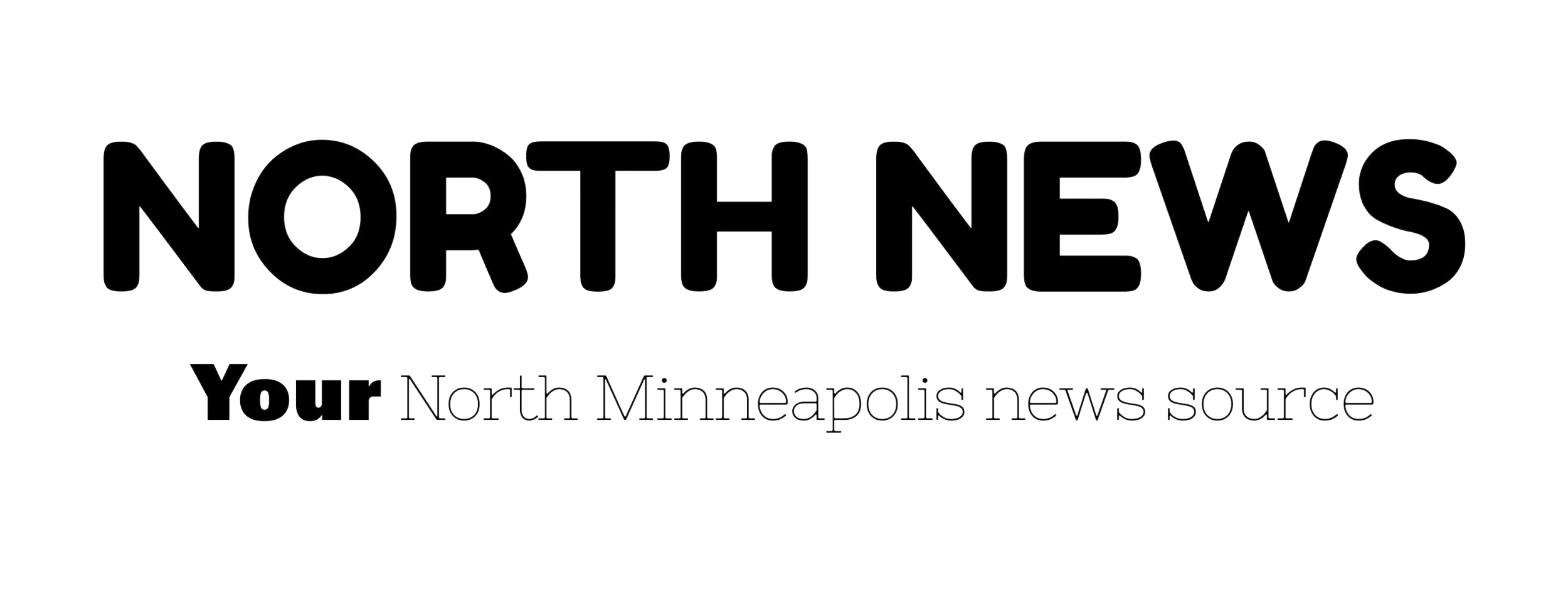Food pantries getting creative to meet surge in demand
Volunteers Jamiela Taylor, left, and Tavion Melton work to restock the produce section of the food pantry at NorthPoint Health and Wellness Center. Photo by David Pierini
By David Pierini, Editor
When NorthPoint moved its food pantry to its newly renovated Health and Wellness campus last August, staff and volunteers thought they had a good-sized space to meet the needs of hungry families.
Already, the new food pantry is bursting at the seams.
NorthPoint provided as many as 100 people on a busy day at its old facility in a former corner store. Now as many as 300 show up, resulting in long waiting periods to shop and shelves that can’t be restocked fast enough.
Food programs across Minneapolis report a huge swell of new people seeking food for their families. Numbers on average have doubled in the last year as waves of new immigrants arrive, food prices soaring under the scare of inflation and the discontinuation of food security benefits extended to more people during the COVID-19 pandemic.
Second Harvest Heartland, a food bank and hunger relief organization based in Brooklyn Park, reported double the number of visits to the food programs and pantries it partners with over the last two years. Through its partner organizations, Second Harvest Heartland provided 128 million meals last year, 50 million more than in 2022, said Angelica Klebsch, Second Harvest’s director of Community Partnerships and Investments.
Second Harvest partners with more than 1,000 programs and 423 pantries in 59 counties throughout Minnesota and Wisconsin. This includes 12 in North Minneapolis.
“All of those things (listed above) make it hard for families to keep their fridges full,” Klebsch said. “There’s just tremendous need. We hear that from our pantry partners all the time. I don’t think we’ve met all the needs.”
At NorthPoint, a pantry in the Second Harvest network, staff is rethinking distribution methods to improve the flow of people and their shopping experience, said Chief Operating Officer Kimberly Spates.
Staff knew there would be an increase when it relocated under the same roof as its other services; NorthPoint was intentional as part of its holistic approach. The pantry had anticipated the move would mean an uptick in people. Another spike came in November.
“We saw the second increase right before the holidays,” said Marissa Elliott, manager of Outreach and Health Initiatives for North Point. “In talking with families, they shared that the financial burden of trying to provide for the family during the holidays and buying gifts for their kids was causing additional stress for them. It was why people were utilizing our food shelves more. There was also another local food shelf that closed down, so they were coming to our food shelf.”
Anna Gerdeen, who runs Camden Collective’s weekly food distribution at Salem Evangelical Lutheran Church, said their numbers doubled by the end of 2023. She said many new families are migrants from Ecuador.
Gerdeen said Camden Collective didn’t operate in the final week of December because it ran out of money to purchase food at the end of the year. Camden Collective is among the programs connected to Second Harvest.
“Last year, I spent around $1,000 a week on food to pull off a food distribution that served 300 families a week or around year, we will have a smaller food budget, so I'll be working with a budget of around $775 a week – and our client base keeps growing.”
At NorthPoint, Elliott said she is grateful for her corps of volunteers, but the increased numbers can stretch the volunteer staff thin. There are times when Spates has sent someone from another department to the food pantry to help with Spanish-language shoppers.
While Klebsch said NorthPoint’s food pantry illustrates the need, and its effectiveness also lets people know the service is there.
She said that the food pantry will call on other NorthPoint workers to translate help, showing the nimbleness by which food shelves and hunger organizations apply to the surges in need.
Groups are trying to look into the future to anticipate needs.
Last year, when North Minneapolis lost three shopping spots within a month, Aldi and Walgreens, and a Walmart in nearby Brooklyn Park, Second Harvest consulted with the Northside pantries to prepare for increased demand and sent more food to those sites.
Second Harvest assists with grant writing and facilitates connections with other partners to help pantries.
“We have learned to be much more responsive, to move more quickly so that we can rise up to what our partners are telling us,” Klebsch said.
The urgency is nationwide, she said, but the good news is Minnesota is faring better than many states.
Klebsch said legislation passed last year, including free school meals, shows the state’s commitment to invest in alleviating hunger. Second Harvest Heartland also negotiated lower prices for milk and meat with suppliers so that pantries could order more.
How you can help
Food pantries are in constant need of volunteers and Second Harvest Heartland can connect people to a pantry near them. Visit https://www.2harvest.org/get-involved/volunteer-opportunities to pick up a shift.
You can also donate money for hunger relief on the Second Harvest website

